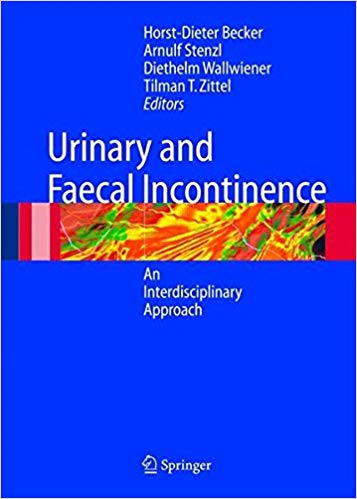
From the reviews:
"This book is devoted to incontinence. The main quality of this book is to provide information about the two disorders
in the same book, allowing each specialist to get updated about the disorder in which he is not specialised.
This is an interesting volume for every surgeon interested in functional pelvic disorders."
(J. Van de Stadt, Acta Chirurgica Belgica, Vol. 105 (4), 2005)
"The formation of a pelvic floor interest group emphasises the gradual change in approach to pelvic floor problems.
This fine production from Springer will form an essential part of the library of any group involved in these areas.
Each chapter is balanced, thorough and up to date. This is a meticulous and valuable book, a source of information
over a wide range of fields with a balanced review of the ?treatment of these common and disabling conditions."
(G. J. Oettle, SAJS, Vol. 44 (1), February, 2006)
"This book is an extensive and splendid work on incontinence, seen from the point of view of gastro-enterologists,
surgeons, urologists, gynecologists and epidemiologists. It is clearly written and illustrated with numerous high
quality drawings and photographs of which many in color. Trained specialists will find here an up to date state
of the art while for trainees it contains a wealth of information and facts often completely new for them.
In my opinion it is a highly recommended book."
(Prof. Wouter Vaneerdeweg, Acta Chirurgica Belgica, Vol. 105 (5), 2005)
"This new publication provides an updated survey of prevalence, pathophysiology, diagnosis and the current therapy.
The book focuses on an interdisciplinary approach and targeted at both general and colorectal surgeons, urologists,
gynaecologists, and gastroenterologists who are involved in the treatment of incontinent patients. The book should
be available in every general medical library."
(Prof. Dr. F. M. J. Debruyne, European Urology Today, December, 2005)
"To describe the prevalence, pathophysiology, diagnostic approach, therapeutic options and treatment outcome of
urinary and faecal incontinence. The chapters are clearly written and cover almost all the various aspects
(epidemiology, pathophysiology, clinical, medical and surgical therapy) of urinary and faecal incontinence.
it is very well written and illustrated. ?A useful book, directed primarily to those dealing with pelvic floor
disorders." (G. Bassotti, Digestive and Liver Disease, Vol. 37, 2005)
Epidemiology of Urinary Incontinence
Epidemiology of Faecal Incontinence: A Review of Population-Based Studies
Perception of Incontinence in and by Society
The Rodent Animal Model to Explain Stress Urinary Incontinence
Birth Trauma and Incontinence
Neurogenic Urinary Incontinence
Fecal Incontinence After Rectal and Perianal Surgery
Evaluation of Anorectal and Pelvic Floor Muscle Function
Imaging of the Pelvic Floor ?Videoproctography and Dynamic MRI of the Pelvic Floor
Diagnostic Methods to Detect Female Urinary Incontinence
Pharmacological Treatment of Urinary Incontinence
Medical, Behavioural and Minimally Invasive Therapy ?A Urologist뭩 View
Medical and Behavioral Treatment of Fecal Incontinence
Innovative and Minimally Invasive Treatment of Stress Urinary Incontinence
Abdominal, Vaginal or Laparoscopic Approach for Urinary Incontinence?
Diagnostic and Surgical Management of Stress Urinary Incontinence
The Artificial Urinary Sphincter
Sphincteroplasty
Dynamic Graciloplasty
The Artificial Bowel Sphincter in the Treatment of Severe Fecal Incontinence in Adults
Innovations in Fecal Incontinence: Sacral Nerve Stimulation
Stoma Surgery
Postoperative Management After Surgery for Incontinence and Prolapse
Postoperative Management of Urinary Incontinence After Urologic Surgery
Incontinence Treatment after Rectal or Perianal Surgery
Quality of Life with Urinary and Fecal Incontinence
Long-term Results After Surgery for Urinary Incontinence
Long-term Results of Surgery for Stress Urinary Incontinence ?A Urologist뭩 View
Long-term Results After Fecal Incontinence Surgery


